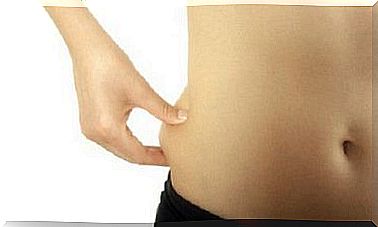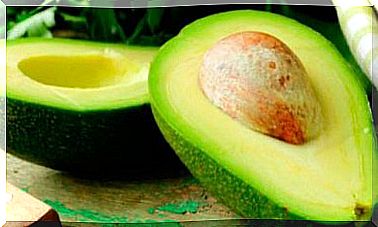What Is Buckwheat Honey And What Are Its Properties?
Buckwheat honey is distinguished by its special taste and medicinal properties. It concentrates antioxidants, vitamins and minerals which have beneficial effects on health. Do you want to discover them?
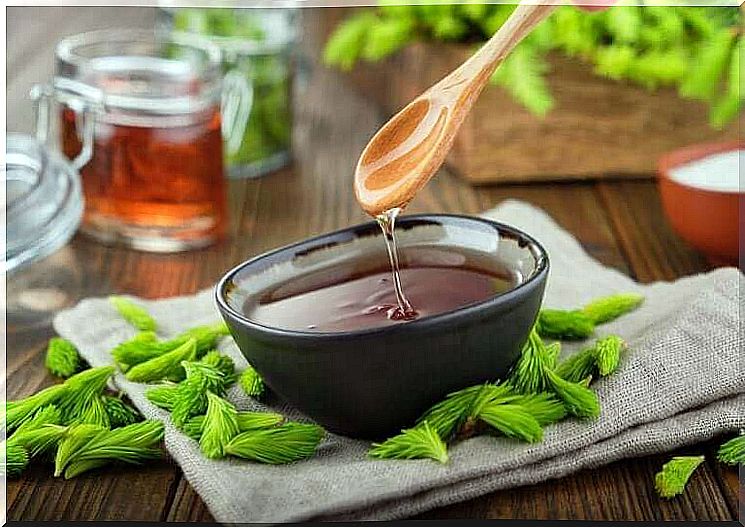
Not many people know that there are more than 300 types of honey. Perhaps one of the lesser known is buckwheat honey, which stands out for its peculiar dark color, as well as its amazing taste and aroma, reminiscent of sugar cane molasses.
This natural substance is made by bees from pollen collected from plants. It has been appreciated for centuries and was already used by the Greeks, Egyptians, Mayans and Babylonians both for its nutritional capacity and for its medicinal properties.
This honey is distinguished by its content of antioxidants, vitamins and minerals. It is also known for its ability to promote wound healing, soothe coughs and fight certain infections. Below we tell you more about its features and how to use it in your daily life.
What is buckwheat?
Buckwheat, sometimes called buckwheat, is not a relative of common wheat or even of a cereal. Buckwheat ( Fagopyrum esculentum ) is the grain of a plant of the polygon family. Its fruits have a triangular shape and a dark color.
Its culture is widespread across much of the world, but highly concentrated in Europe, Russia, the United States, and Asia. One of its strong points is that it does not contain gluten and that it cooks like any other cereal.
In some countries there are many typical dishes prepared with this ingredient. This is the case for Japanese soba noodles, Breton pancakes, blinis in Eastern Europe or kasha in Russia.
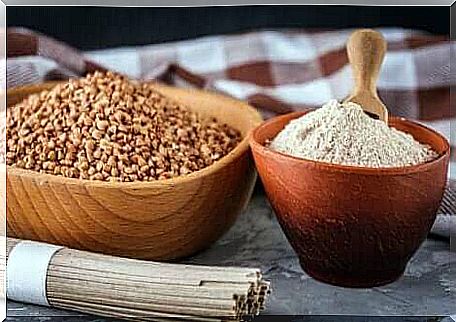
Characteristics of buckwheat honey
Buckwheat honey usually has very different characteristics from other more well-known varieties of honey, such as thousand flower honey, rosemary or eucalyptus.
Its color may vary a bit, depending on when and where the buckwheat pollen is collected. It has undertones between coppery yellow and black, although the most common is a color between red and amber.
The taste is close to sugar, but not as close as most honeys. It also has a bitter aftertaste which makes it a bit irritating on the palate. It is a fragrant honey reminiscent of malt or the aroma of cane sugar.
In general, its consistency is viscous and not very fluid. Also, it tends to crystallize quickly, making its texture much thicker and similar to a spread.
Benefits and Uses of Buckwheat Honey
The main component of honey is carbohydrates, but it also contains vitamins, minerals, organic acids, flavonoids, polyphenols and volatile compounds. What are its main advantages? Let’s see this in detail.
It is an adjuvant in the treatment of scars and burns
The use of honey as a remedy for healing and treating wounds is well known. It should not be applied to open wounds, but it is useful for ulcers, sores or scrapes on the skin. Buckwheat honey is popular because it helps stop the growth of bacteria on the skin’s surface.
It is antioxidant
This is due to its phenol content. So far, studies show an increase in antioxidant components in the blood, but the exact role they play in the human body is not known.
However, it is now known that antioxidants are a key factor in preventing premature aging and associated diseases.
Protection of the intestinal microbiota
Research results presented in the journal Evidence Based Complement Alternative Medicine indicate that buckwheat honey may provide benefits to the human gut. It is in particular a good food for the positive bifidobacteria which live in the colon. In addition, it limits the growth of pathogenic bifidobacteria.
Recent scientific evidence indicates the importance of the gut microbiota for health, beyond this organ. Good health results in improvements in the brain, immune system or nutritional status.
Antimicrobial and antiviral capacity
Due to the high sugar content of honey, it can have a positive effect in combating some common pathogens in hospitals.
Scientists specifically analyzed its activity against the following microorganisms:
- Clostridium difficile
- Staphylococcus aureus
- Two types of Pseudomonas aeruginosa
- Enterococcus faecalis
- Klebsiella pneumoniae
These experts focused their research on Wisconsin honey, and their conclusion is that it can be added to other therapeutic resources against resistant pathogens, although more evidence is needed.
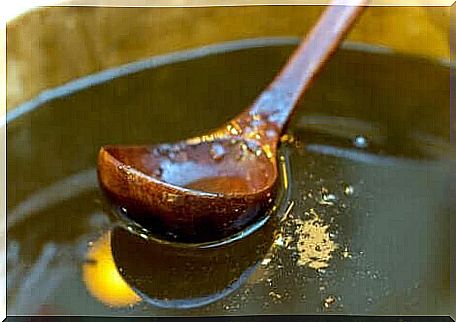
Improvement of the common cold
Buckwheat honey, like common honey, appears to be an adjunct in treating cold symptoms. In children, it helps soothe coughs and improve the quality of sleep.
Recommendations for consuming buckwheat honey
One of the most common and popular ways to use honey is herbal tea or hot infusion. They can be prepared with honey alone diluted in hot water, or by adding other plants and spices of different varieties.
In this case, do not exceed the recommended dose of one teaspoon per cup for adults and half for young children. It is important to remember that it is not recommended for children under one year old due to the risk of botulism.
In other cases, it’s a good sweetener that can replace regular table sugar. A teaspoon is added to some dishes or desserts like the following:
- Oatmeal porridge
- Fruit yogurt
- Cottage cheese with walnuts
- Orange with cinnamon
The ability of honey to attract water allows cakes, buns and pastries in general to become more moist. This gives a more particular and more pleasant taste to the palate.
By acting in conjunction with the baking powder, the result is a dough of great sponginess. Spread on bread is also a good option for breakfast or afternoon tea.
It can even be used in savory recipes where a sweet touch is needed.
- Dressings with mustard, red wine vinegar or mayonnaise
- Marinades of fish, meat or tofu
- Caramelized nuts and seeds
Buckwheat honey, a healthy option
Buckwheat honey has a different color, texture and taste than other honeys. It is nevertheless a healthy product that can be easily integrated into the diet, in moderate amounts.
In cooking, it is incorporated into many recipes, both sweet and savory. It is also good for making herbal teas, on its own or mixed with other herbs.
Topically, it can be applied to superficial wounds or burns as it helps in healing and preventing infections. Just apply a thin layer to the desired area and cover it with a clean bandage. Do you dare to try it?





